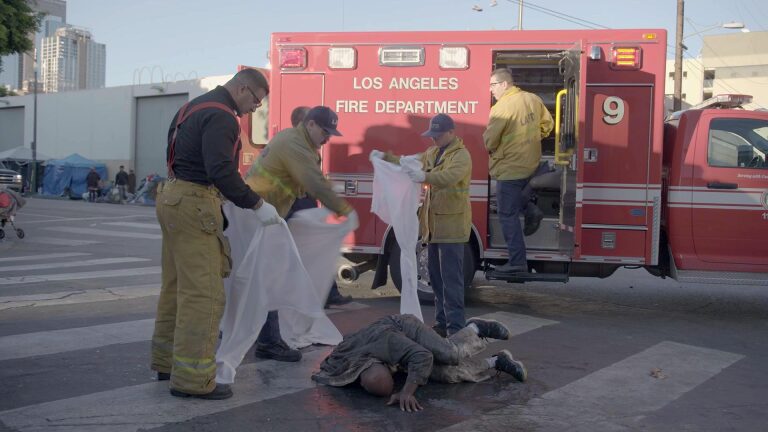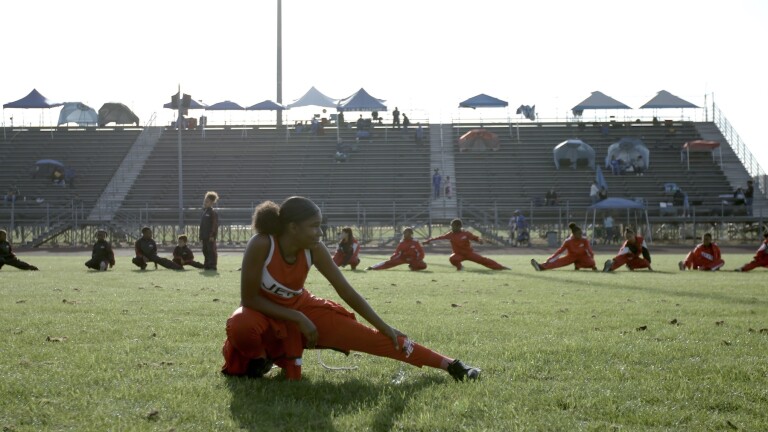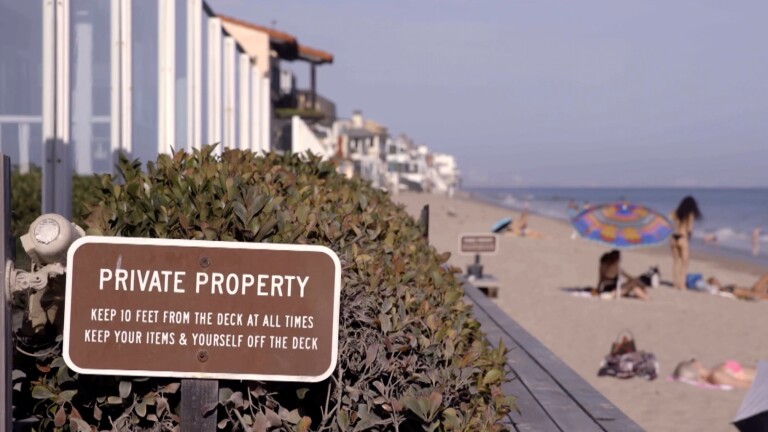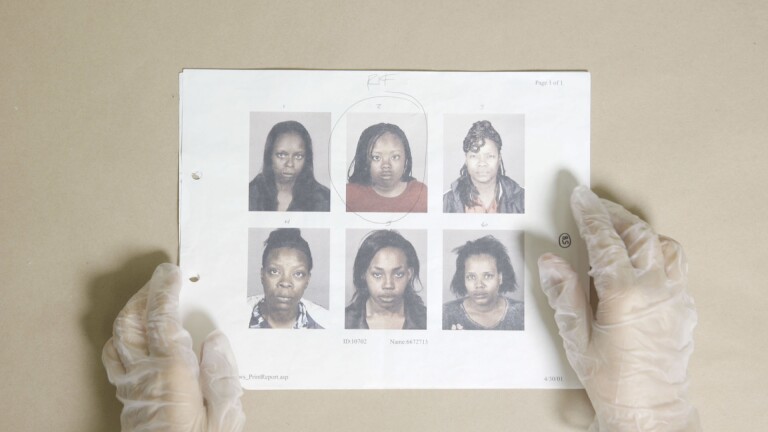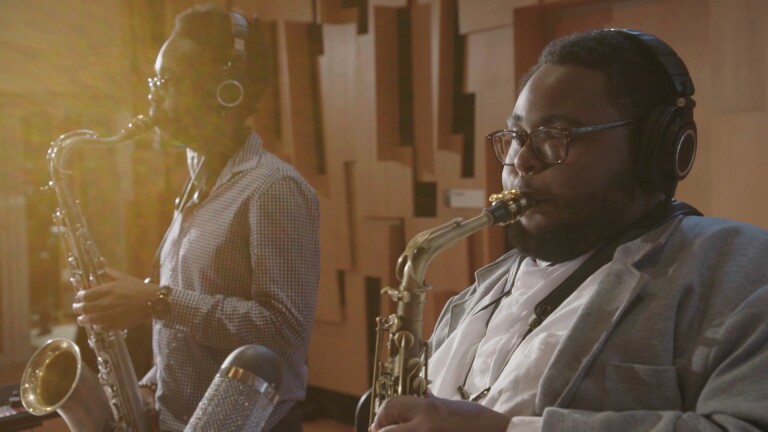
L.A.'s Making Dangerous Intersections Safer, But Are They Focusing on the Right Ones?
We've all heard the jokes about pedestrians in L.A., how they're an endangered species. In a way, it's true.The streets of L.A. can be a dangerous place for those on foot, and some intersections are notorious for a lot of hit-and-run accidents. So the city recently announced that it was taking steps to make certain intersections safer. But as Vince Gonzales reports, they may be looking in the wrong places.
TRANSCRIPT
Vince Gonzales/Reporter: You're not watching a police chase. This is a race to a wreck. Just a regular weekday afternoon for LAPD's traffic division. In the fast lane today: Sergeant Benjamin Zucker.
Benjamin Zucker/LAPD Sergeant [on radio]: Thirty-four, I'm going to be responding to the call at 6th and Western, coming from Wilcox and De Longpre.
Gonzales: Many of the accidents he and other officers see involve motorists slamming into each other on city streets.
Zucker [to firefighter ]: Hey, how you doing?
Firefighter [to Zucker]: This driver here was in the blue car, this guy the other car, in the back of the ambulance right now just getting checked out.
Zucker [to firewoman]: Okay, and visible injuries?
Firefighter [to Zucker]: No visible injuries. No complaints by either one.
Gonzales: The drivers were lucky, but there's another group LAPD officers see every day who are at much greater risk in an accident -- pedestrians.
Zucker: Because they have no protection, there's no seat belt, no air bags for the pedestrians, any time they connect with a car that weighs 4,000 [or] 6,000 pounds, it's going to cause some pretty bad injuries
Gonzales: According to a University of Michigan study released in September, a third of all people who die in L.A. traffic accidents are pedestrians. That's triple the national average. And a majority of those fatalities happen in crosswalks where pedestrians had the right of way, a place where people usually assume they're safe.
Sung Yoon/LAPD: A lot of common things that I hear from pedestrians are, "I thought the driver saw me, so I decided to cross the street." Well, just because you see the driver does not mean that the driver will see you.
Gonzales: LAPD officer Sung Yoon, a 14-year veteran of the force, is one of three officers in this city who have responded to the most accident scenes in recent years.
Yoon: For someone to be involved in a traumatic accident like that, I want to show up, and I want to do my best to help them, then to do an investigation, find out what happened here in this accident, and how can I help to prevent future accidents.
Gonzales: Preventing accidents was the reason the city announced a new half-million-dollar project in December.
Fifty key intersections -- with the greatest number of pedestrian-related accidents -- got what are called "continental crosswalks." These have wider, more visible markings and force cars to stop further back, calling greater attention to pedestrians.
L.A.'s Department of Transportation came up with their list of intersections by searching a database of accident reports filed by officers in every city and community across California.
"SoCal Connected" obtained a copy of the same database. That's how we knew Officer Yoon had responded to more accidents than almost any other officer in L.A. And our analysis of the data raised a question: if the goal is to protect pedestrians, is the city spending its money in the right places?
Our review found there are more accidents at the intersections targeted by the city, because they are very busy crossings. But all the extra cars and people walking means traffic moves much slower. So, according to the data, accidents at those intersections result in mostly lighter injuries and very few fatalities since.
Yoon: The speed is a little less, and therefore, if there is any collision, the injuries may not be as fatal as where accidents involved high speed.
Gonzales: We used the same search guidelines the city did and found a very different list of intersections that, due to fewer pedestrians and faster, deadlier traffic, had many more severe injuries and pedestrian fatalities than those getting the new crosswalks. A review of internal LAPD documents and fatality logs show police are concerned about the same spots we identified.
The intersections we found with the most serious pedestrian injuries are Alvarado and 8th, Crenshaw and Florence, Highland and Lexington, York Boulevard and 63rd Avenue, and Vermont at 62nd and 83rd Streets. And out of the top 46 intersections with serious injuries, only 13 picked by the city made our list.
When it comes to fatalities, 67 L.A. intersections had at least two deaths. Only four of the intersections selected by the city for new crosswalks made that list.
The deadliest intersections in L.A. with at least three fatalities each include: Figueroa and 88th, Santa Monica and Wellesley Avenue, and a stretch of the Pacific Coast Highway between Santa Monica and Malibu, which, according to one web site, the locals in the Pacific Palisades have voted the most dangerous road in L.A. A string of fatalities over the years dot this route near major intersections like Entrada, Chautauqua, Temescal Canyon, and Sunset -- at least ten fatalities by our count.
And then there's Santa Monica and Cotner.
Gonzales [to Yoon]: Been there before?
Yoon [to Gonzales]: Been there. Had investigated a lot of accidents there as well. We've had a lot of fatalities over there. You have the 405 freeway. You have the on-ramp, the off-ramp. And, in that general area, you have a high concentration of offices. So, a lot of times, you're going to have a lot of pedestrian traffic as well. Whenever you have that kind of environment, you're going to have some car accidents.
Lilly Kobayashi/Victim's Relative: My aunt was basically waiting at the light, and once it turned green, she and a few other pedestrians were going to cross the street.
Gonzales: Lilly Kobayashi's aunt, Kelly Shimizu, died at Santa Monica and Cotner two years ago this week.
Kobayashi: I guess the driver just didn't see her, and he just made a sharp right turn onto the freeway, and he never saw her walking on the crosswalk.
Gonzales: It was a hit-and-run. The big rig driver was eventually caught and claimed he didn't realize he'd run over and killed Kelly Shimizu.
Kobayashi: It's only a five-minute news story, and it goes away, but the effects of the accident have permanently changed our family.
Whitney Gilmore/Pedestrian: I just, I thank God that I didn't die at that intersection.
Gonzales: Whitney Gilmore was struck by a hit-and-run driver in the crosswalk at the same intersection in 2008.
Gilmore: I was walking on Santa Monica and Cotner by the 405 freeway entrance, and it was my go. There was, it was okay for me to cross, and I assume out of nowhere that a car came my way. It was a hit-and-run.
Gonzales: Another driver who stopped to help called Whitney's family on her cell phone. Her mother rushed to the hospital.
Sharilyn Gilmore/Whitney's Mother: So she was actually sitting up at the time. I didn't think she had been hurt that badly. Then I found out later that she had had a head injury.
Whitney Gilmore: I had a brain hemorrhage. My brain was bleeding. I had muscle spasms from the top of my neck down to the bottom of my ankles, so literally my whole body was in intense pain. I could not move, I could not walk, I could not sleep. Everything was painful for me.
Gonzales: Her official recovery took several months, but five years later she still has pain and other issues caused by the collision. The driver who ran her down and didn't stop has not been caught.
Whitney Gilmore: It shocks me that I survived that intersection, and from what I've heard, it is a really dangerous intersection and I wish they would do something about it, you know, take action.
Valerie Watson/L.A. Department of Transportation: All of us are pedestrians. We all at one point or another during our day experience some of these issues. If you're taking the bus, if you're driving your car, we all have a beginning and end to our journey where we are walking, so, in a sense, it's really up to all of us to keep that momentum going and keep our elected officials and our city staff focused on safety.
Gonzales: Valerie Watson just happens to be one of those city employees. She joined L.A.'s Department of Transportation six months ago in a newly-created position -- assistant pedestrian coordinator. Her first project was those new continental crosswalks.
Watson: There was kind of a hunch that if we just tackled maybe a very small subset of the intersections that have the highest numbers of pedestrian collisions that you could actually make a dent in the overall number of collisions across the city.
Gonzales [to Watson]: Why not start with the intersections where people are getting seriously injured or even killed. Why not turn to those first?
Watson [to Gonzales]: Well, that's a great point. There's different ways to slice the data that's available. You know that's something that we're definitely interested in understanding is collisions versus actual severe injuries and fatalities.
Gonzales: And Watson says more changes are coming to L.A.'s streets: continental crosswalks are now the new city standard; traffic signals are now synchronized city-wide to control traffic flow and speed; new measures will also help slow traffic near schools; and intersections will see a variety of safety enhancements.
Watson [to Gonzales]: All of our efforts are really kind of, there's a thread through all of them, and it's all about expanding the capabilities of the department to really strike a better balance on our streets.
Gonzales [to Watson]: Make it safer.
Watson [to Gonzales]: Make it safer and also improve the pedestrian experience.
Gonzales: Everyone on the streets is part of that balancing act. Pedestrians need to be careful, and drivers need to realize how one accident can change many lives.
Sharilyn Gilmore: If they could just take that time to think, what if it was their family member? Because that's somebody's mother, brother, sister, daughter. That it doesn't affect just the person that's hit, but it affects everybody around them, their whole family and their friends.
Gonzales: The experts -- the men and women who deal with the aftermath of L.A. accidents everyday -- say it's actually easy for drivers to avoid meeting them.
Yoon: Lots of the accidents can be avoided by simple measures, paying a little more attention when you are driving, being a little bit more aware of where your pedestrians are or other vehicles.
Zucker: Slow down, put your cell phone in your trunk, think of other people. Think of different scenarios. Always allow yourself enough space to get out of a situation. Give yourself enough time. It's better to be late than never show up at all.

